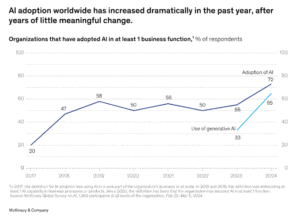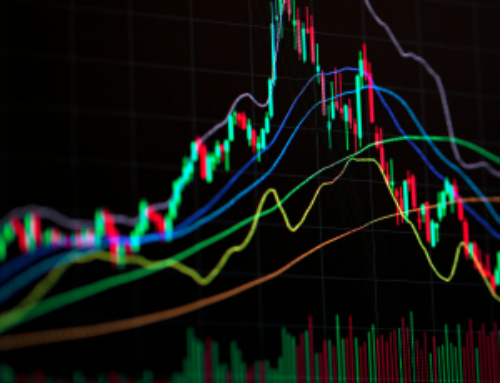A Year of Change and Optimism
The year 2024 will be remembered as a pivotal moment in global markets, shaped by political shifts, monetary
policy changes, and technological advancements. From elections that reshaped leadership to the Federal
Reserve’s long-awaited rate cuts, investors navigated a dynamic landscape that ultimately fueled optimism in
both stocks and bonds.
Political Shifts: America and the World Vote for Change
In 2024, voters across the globe rejected incumbents, signaling a demand for new leadership and fresh policies.
In the U.S. presidential election, a change in administration brought renewed debates over economic policies,
taxation, and regulatory shifts, all of which influenced investor sentiment. Similarly, key elections in Europe and
emerging markets saw ruling parties ousted, reflecting widespread dissatisfaction with economic stagnation and
inflation. These political shifts introduced short-term uncertainty but ultimately reinforced investor optimism for
policy-driven economic growth(1).
The Fed’s Pivotal Rate Cut
After two years of restrictive monetary policy, the Federal Reserve finally pivoted, delivering its first rate cut in early Q4 2024. The Federal Reserve initiated its first rate cut after two years of restrictive monetary policy, reducing the federal funds target rate by 50 basis points to a range of 4.75%–5.00% in September. The Federal Reserve implemented a 25-basis point rate cut in December, adjusting the federal funds target range to 4.25%–4.50% (2). This marked the end of the aggressive tightening cycle that had dominated markets since 2022. With inflation showing sustained declines and economic growth stabilizing, the Fed’s decision boosted bond markets, sending yields lower and igniting a strong rally in equities. Lower borrowing costs revived corporate investments and strengthened consumer spending, reinforcing confidence in a soft landing for the economy.
 The AI Wakeup Moment
The AI Wakeup Moment
If 2023 was the year AI captured headlines, 2024 was the year AI revolutionized industries. Groundbreaking advancements in AI automation, robotics, and semiconductor development reshaped business models and drove market valuations higher. Tech giants, fueled by demand for AI-powered applications, saw record-breaking earnings growth. The wake-up moment for investors came as AI-driven productivity gains began materially impacting earnings, reaffirming AI’s role as a transformative force in the economy (3).
Stock Market’s “Animal Spirits” Resurgence
Markets responded with renewed enthusiasm, echoing Keynesian “Animal Spirits.” John Maynard Keynes, a British economist, in his seminal work The General Theory of Employment, Interest, and Money (1936). Keynes used the term to describe the emotional and psychological factors that influence economic decision-making, particularly in uncertain or unstable conditions. “Animal spirits” refers to the instincts, emotions, and confidence that drive human behavior in the economic realm. These intangible factors impact investment, consumption, and business decisions beyond pure logic or rational calculations. Keynes argued that economic activity is not solely determined by objective factors like interest rates or profit expectations. Instead, it is heavily influenced by the confidence and optimism (or pessimism) of consumers and investors (4).
The S&P 500 and Nasdaq soared to new all-time highs, as investors embraced a risk-on mentality. Lower interest rates, AI innovation, and political clarity reignited confidence, with cyclical sectors, particularly technology, industrials, and consumer discretionary, outperforming5. Meanwhile, the bond market rebounded, benefiting from falling yields and improving credit conditions.
2024 was a year of transformation — from the voting booths to the boardrooms. Investors welcomed policy shifts, rate cuts, and AI-driven economic potential, all of which fueled a broad market rally. With optimism returning and tailwinds in place for 2025, the markets have set the stage for continued growth and new opportunities in the years ahead.
2025 Market Outlook: A Year of Optimism and Transformation
The stock and bond markets enter 2025 with strong momentum, fueled by fiscal discipline, emerging digital assets, and continued optimism. While risks remain, the broadening market rally and economic stability present an opportunity-driven investment landscape.
DOGE: The Department of Government Efficiency as the Modern-Day Truman Committee – An Unexpected
Fiscal Asset
In an age defined by rapid technological advancements, shifting public expectations, and an increasing demand for transparency, the metaphorical “Department of Government Efficiency” (DOGE) emerges as a modern counterpart to the historic Truman Committee. While distinct in structure and function, both DOGE and the Truman Committee share a common mission: to hold powerful entities accountable, ensure resources are used efficiently, and advocate for the public good.
The Legacy of the Truman Committee (6)
The Truman Committee, officially known as the Senate Special Committee to Investigate the National Defense
Program, was established in 1941 under the leadership of then-Senator Harry S. Truman. Its mission was clear:
to identify and eliminate waste, fraud, and profiteering in the production of wartime materials during World War
II. In a time of immense national expenditure and global crisis, the committee was able to achieve the following7:
• Excessive spending by contractors cost an estimated $250 million;
• The Carnegie-Illinois Steel Corp sold faulty slabs of steel to be used in shipbuilding and falsified quality control reports;
• Defective engines made by the Curtiss-Wright Company and used in airplanes led to the death of student pilots;
• Standard Oil Company and Alcoa, which had exclusive patents or monopolies on critical war materials, had intentionally slowed the development of substitutes or created artificial shortages; and
• The Remington Company, according to Senator Truman, got “$600,000 for acting as advisors to the Government” but in his words: “nobody knows what this advice is or what it is worth.”
• Saved the government $10 to $15 billion. In today’s dollars, that’s worth about $2 trillion…
• March 1943, Time Magazine featured “Investigator Truman”
DOGE: A Modern Approach to Oversight
The metaphorical Department of Government Efficiency (DOGE) can be envisioned as a modern institution —that seeks to replicate the Truman Committee’s success in today’s complex landscape. DOGE is expected to play a surprisingly effective role in streamlining government finances in 2025. By identifying wasteful spending and promoting fiscal responsibility using modern day technologies and innovations, DOGE has the potential to trim government expenditures while maintaining critical services, proving itself as a valuable tool in addressing economic inefficiencies (8).
Deficit Control, Debt Management, and Subdued Inflation
With fiscal discipline improving, government spending is expected to be more controlled, reducing pressure on deficits and debt accumulation. While political disruptions and policy debates will continue, the outcome should be fiscally favorable. Inflation, which remains a key market driver, is likely to stay subdued, as technological advancements, particularly in AI and automation, create deflationary effects by improving productivity and lowering costs.
Optimism and the Continuation of “Animal Spirits”
As discussed in the 2024 recap, the power of economic optimism remains a strong force in 2025. Lower interest rates, technological booms, and renewed confidence in corporate earnings keep markets in an expansionary mode. This pro-business sentiment will encourage capital investment, job creation, and rising consumer confidence, sustaining economic growth.
Broadening Stock Market Rally
While the “Magnificent 7” (top tech giants) have led market gains in recent years, 2025 is expected to bring earnings growth to the rest of the S&P 500—what I call the “S&P 493.” As capital rotates into small and mid-cap stocks, we expect broader participation in the rally, leading to healthier market breadth and more diverse investment opportunities (9, 10).
The Rise of Digital Assets: Bitcoin Tests New Highs
A new asset class emerges in 2025 from years of battle-testing, as Bitcoin and other digital assets gain mainstream institutional adoption. With regulatory clarity improving and increased investor interest, Bitcoin is expected to test new all-time highs under the current administration (11). This shift highlights a growing recognition of digital assets as a legitimate store of value and alternative investment class.
Risks: Policy Uncertainty Remains the Biggest Threat
Despite the bullish outlook, policy decisions remain the greatest risk to markets. Tariffs, immigration policies, and regulatory shifts could create disruptions, particularly in trade and labor markets. Investors should remain cautious of geopolitical tensions and potential unexpected policy changes that could impact business confidence.
Investment Themes for 2025
Favored Sectors: Financials (more mergers and acquisitions are expected), Small-Cap Stocks, Bitcoin (for interested investors)
• Neutral Sectors: Energy, Materials, Healthcare, Utilities
• Underweight: Consumer Staples (potentially weaker pricing power in a deflationary tech-driven environment)
As technology-driven deflation, fiscal efficiency, and market optimism persist, 2025 presents strong
opportunities for diversified investors. While risks remain, the broadening stock market rally, disciplined government spending, and the rise of digital assets position this year as a transformative period in financial markets. We remain cautiously optimistic, continuously assessing market momentum and making strategic adjustments as needed.
REFERENCES
1. 2024: The year incumbent governments lost power – Vision of Humanity, December 2024
2. Press Release – The Federal Reserve Board, December 18, 2024
3. The State of AI in early 2024 – McKinsey & Company, March, 2024
4. The General Theory of Employment, Interest, and Money – John Maynard Keynes, February 1936
5. S&P 500 Posts a Record High on Tech Strength and AI Optimism – Rich Asplund for Barchart, January 23, 2025
6. Photo – Senator Truman during the Truman Committee hearings – Harry S. Truman Library Museum, 1942
7. Portraits in Oversight: Harry Truman and the Investigation of Waste, Fraud, & Abuse in World War II – Levin Center, Undated
8. Establishing and Implementing The President’s “Department of Government Efficiency” – The White House Executive Order, January 20, 2025
9. Mid-Cap Stocks Have Been in the Shadows. Why 2025 Could Be Their Year – BARRON’S, January 24, 2025
10. How Stock Investors Should Prepare for 2025 – MorningStar, January 2, 2025
The material contained herein is intended as a general market commentary, solely for informational purposes and is not intended to make an offer or solicitation for the sale or purchase of any securities. Such views are subject to change at any time without notice due to changes in market or economic conditions and may not necessarily come to pass. This information is not intended as a specific offer of investment services by Dedicated Financial and Turner Financial Group, Inc.
Dedicated Financial and Turner Financial Group, Inc., do not provide tax, legal or accounting advice. You should consult your own tax, legal and accounting advisors before engaging in any transaction.
Any hyperlinks in this document that connect to Web Sites maintained by third parties are provided for convenience only. Turner Financial Group, Inc. has not verified the accuracy of any information contained within the links and the provision of such links does not constitute a recommendation or endorsement of the company or the content by Dedicated Financial or Turner Financial Group, Inc. The prices/quotes/statistics referenced herein have been obtained from sources verified to be reliable for their accuracy or completeness and may be subject to change.
Past performance is no guarantee of future returns. Investing involves risk and possible loss of principal capital. The views and strategies described herein may not be suitable for all investors. To the extent referenced herein, real estate, hedge funds, and other private investments can present significant risks, including loss of the original amount invested. All indexes are unmanaged, and an individual cannot invest directly in an index. Index returns do not include fees or expenses.
Turner Financial Group, Inc. is an Investment Adviser registered with the United States Securities and Exchange Commission however, such registration does not imply a certain level of skill or training and no inference to the contrary should be made. Additional information about Turner Financial Group, Inc. is also available at www.adviserinfo.sec.gov. Advisory services are only offered to clients or prospective clients where Turner Financial Group, Inc. and its representatives are properly licensed or exempt from licensure. No advice may be rendered by Turner Financial Group, Inc. unless a client service agreement is in place.









